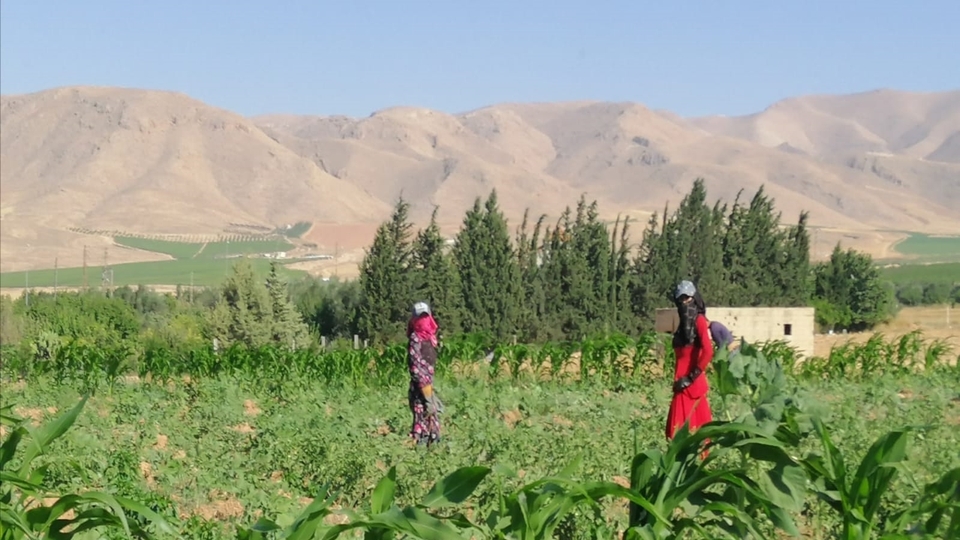The Land We Stand to Lose to the Sovereign Fund
The plan to privatize assets held by the Lebanese state, including vast real estate, is gaining steam as politicians and bankers pitch it as a way out of the economic and financial crisis.
It began on March 10, 2020, when Mohammad al-Mashnouk, then minister of the environment, presented the prime minister with what he marketed as “a solution to the crisis of fears about the fate of bank deposits.” Al-Mashnouk’s “solution” was practically a carbon copy of the plan the Association of Banks in Lebanon (ABL) would release two months later, under the title “Contribution to the Lebanese Government’s Financial Recovery Plan.”
Though packaged differently, both plans call for the establishment of a fund — to be called either “the Sovereign Fund for the Management of State Property” or “the Fund for Government Debt Relief” — that would allow private banks to seize various assets held by the Lebanese state, including real estate. The ABL plan even specifies that the state assets in question must be valued at approximately $40 billion — allegedly to match the amount owed by the state to the central bank — and that they must include “some or a combination of shares in State Owned Enterprises (e.g. telcos), public lands and other public real estate assets, and/or exploitation rights/concessions (e.g., Lebanon’s waterfront).”
Contrary to what advocates for privatization claim, the sale of state land is unlikely to generate the profits needed to pay off the state’s debt, or to compensate for the losses borne by this crisis.
By July 2020, other dangerous ideas to privatize state land had made their way into Parliament in the form of several bills. One such bill, sponsored by the Loyalty to the Resistance Bloc in September 2020, sought to legally reclassify a type of state land that has traditionally allowed for communal use (known as amiri land), and consequently privatize it.
Through these moves, land that belongs to the Lebanese state — around a quarter of Lebanon’s territory — is the newest target of the privatization that has proved so exclusionary and detrimental to Lebanon’s most impoverished. Contrary to what advocates for privatization claim, the sale of state land is unlikely to generate the profits needed to pay off the state’s debt, or to compensate for the losses borne by this crisis. What is likely, however, is that such sales would further constrain the Lebanese state’s capacity.
Faced with these risks, Public Works Studio embarked on an in-depth research project to answer the questions: What land is owned by the Lebanese state? Where is it located? What social value do these lands hold? And what do we stand to lose if the state concedes them?
We produced a research guide that identifies those lands that are integral to our natural environment, that house broad swaths of the population, and which are intimately tied to the diverse ways of living and of making a living on Lebanese territory. By making the stakes more tangible and visible, we aim to make a stronger case for why the plans to privatize state lands must be resisted. By formulating informed counter-claims to current oligarchic plans, we hope to spur a public debate against privatization and towards preserving the public domain as a fundamental right of future generations.
In that spirit, here we present snapshots of the key threats to public land and of the elements most worth preserving.
Reclassifying State Property: A Legal Tool of the Oligarchy
Current plans to privatize state property, though more visible and brazen, are also a continuation of long-standing policies that have gradually robbed and neglected the public domain.
One such policy is the use of legal loopholes to reclassify state lands, thereby removing restrictions on their use.
The Lebanese state owns two categories of property: public state property and private state property (Lebanon’s Real Estate Property Law, Resolution no. 3339 of 1930). These categories are consequential because they determine what the state can and cannot do with its properties.
When it comes to its “private” property, the state has full property rights and can do with it what any individual would with their own private property. The state — more specifically, the Ministry of Finance’s General Directorate of Land Registry and Cadastre — can sell, cede, or lease this type of property, in accordance with relevant law.
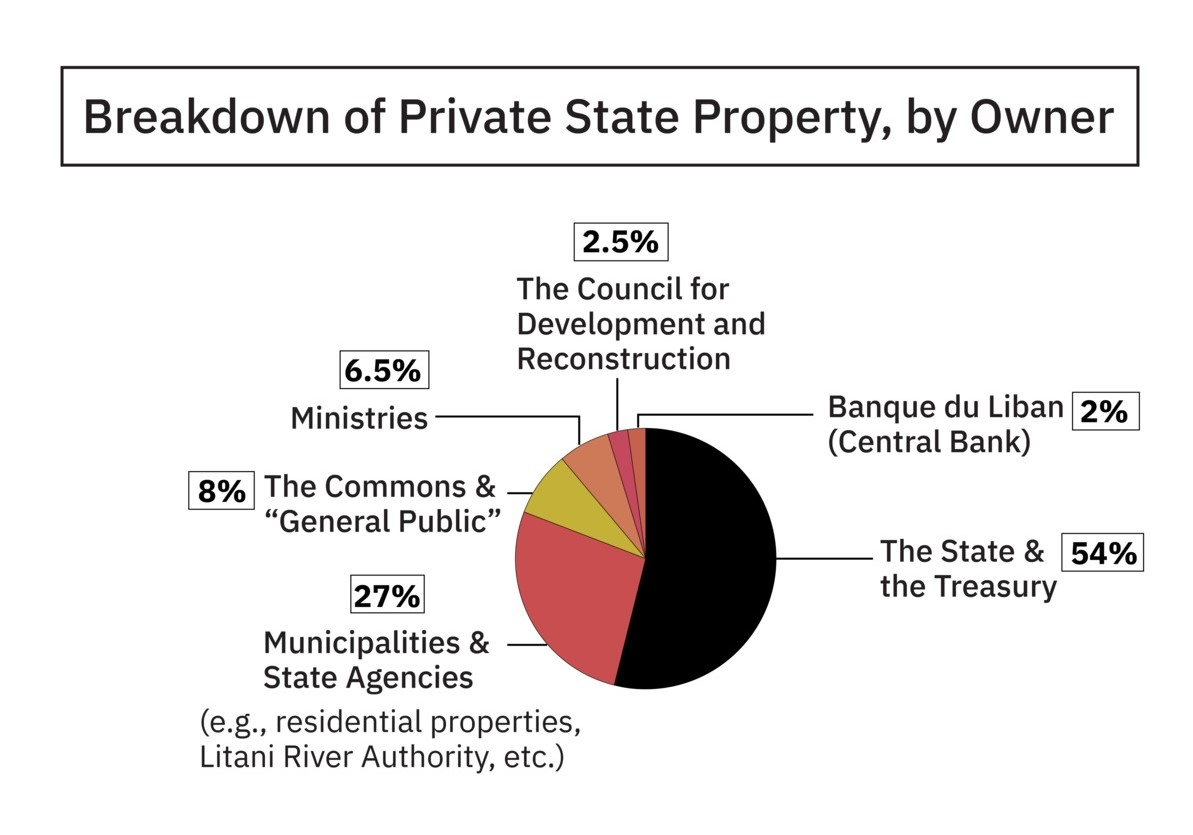
In contrast, the state’s “public” property — legally known as “reserved protected land” — can never be sold. It includes any property meant to be used in the public interest, such as riverbeds, riverbanks, sea shores, waterfalls, lakes, irrigation canals, roads, paths, sidewalks, and storm drains, among others. This type of property is “protected” because the state cannot sell it or dispose of it, nor can ownership over it be acquired over time. Unless it is first redesignated as “private” to remove these restrictions — which is precisely what has happened over time.
We collected and analyzed data from the Official Gazette on reclassifications of public state property into private state property between 1922 and 2022.
What we found were many cases where public state property was redesignated under the pretext of “serving the public interest,” a loose concept that seems to track the individual economic and political interests of the day’s decision makers. This legal loophole has been used to facilitate investments that should have never been allowed and to encroach on integral elements of our natural and built environments.
Only in a few cases could the request to redesignate property be justified on the basis of serving the public interest. For example, the Ministry of Education requested a reclassification of a plot in order to build a public school on it; the property became “private state property” and ownership reverted to the ministry. Yet, only in 7 percent of cases was a request to reclassify property initiated by an official entity (a ministry, agency, or municipality). In contrast, in 83 percent of cases, requests to reclassify property were initiated by private parties: an individual, a company, an endowment, a syndicate, an association, etc. Often, requests were made by owners of neighboring real estate.
Current plans to privatize state property, though more visible and brazen, are also a continuation of long-standing policies that have gradually robbed and neglected the public domain.
Another type of loophole used to remove the “public” designation from state property appears in the context of infrastructural renovations of protected properties, such as roads, channels, or canals. Because old infrastructures can no longer serve the public interest, the logic goes, they can be reclassified. We found this pattern in 26 percent of cases. And when we dug into specifics, we found that these redesignations were used to buy political loyalties in clientelistic networks.
The history of state land reclassifications showcases how Lebanon’s politicians engage with protected lands as mere commodities that can be turned into financial profit and political capital. Under legal cover, the public domain has been offered to those in power on a silver platter.
The Attack on Amiri Lands
Reclassifying public state property as private is not the only way Lebanon’s politicians erode the public domain under legal cover. They also try to intervene to remove restrictions on specific types of private state property. There are four types of private state property — mulk, amiri, matruk, and mewat — each with specific bundles of rights.
The history of state land reclassifications showcases how Lebanon’s politicians engage with protected lands as mere commodities that can be turned into financial profit and political capital.
In recent years, one of the most dangerous reclassification attempts has been to turn amiri lands into mulk. Amiri lands — a legacy of Ottoman rule, as their name implies — are properties that are officially owned by the state but where non-state actors can acquire the right to use and benefit from them. Any individual or group who utilizes an amiri property (or sections of it) in a regular, public, non-contested manner, continuously for ten years, can acquire rights over it. These rights include planting, harvesting, excavating (at any depth), extracting materials from the excavations, disposing of this material, renting the land, or lending it to others. Holders of these rights can also transfer them to others or bequeath them as inheritance to their descendants, with equality between women and men. These rights are forfeited if the land is not used for five consecutive years, in which case they revert to the state. The rights, however, to sell amiri lands, to transfer ownership, or to turn them into an endowment is always reserved to the state.
Crucially, the rights associated with amiri lands make them accessible to marginalized communities. For one, the use of amiri lands is free of any payments to the state, making them an option for those without the economic means to purchase or rent property. The use of amiri lands is also not conditional to holding Lebanese nationality, which makes it accessible to Palestinian, Syrian, and other foreign nationals. Perhaps most notably, the fact that the right to use amiri lands can be inherited equally, regardless of sex, expands access for women, especially for those whose inheritance of other types of property is governed by Islamic sharia that grants them half the share of males.
Moreover, the fact that a single amiri property can be used by many individuals encourages communal and collective management of the land — a rare exception in a landscape that sanctifies private property.
Amiri lands constitute the majority (52 percent) of all real estate belonging to the Lebanese state, or 31,907 different properties. They consist primarily of agricultural lands, with 78 percent of them in the Beqaa region, where three quarters of residents live off agricultural work. Given that the Beqaa is responsible for a large percentage of the country’s total agricultural production, another benefit of the amiri designation is that it can help protect the agricultural sector from market speculation.
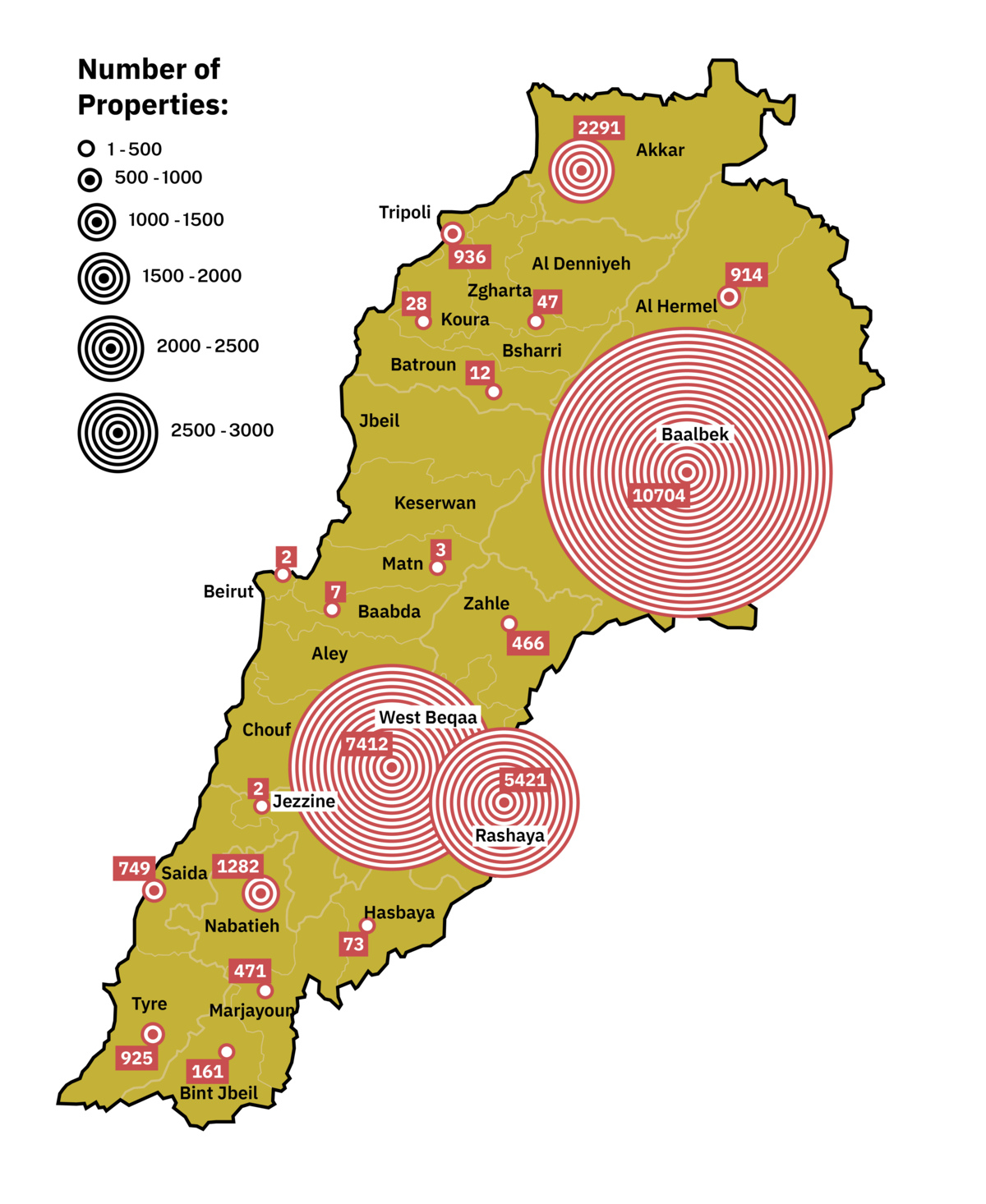
Geographical Distribution of Amiri State Property
(Source: Data compiled from Ministry of Finance records)
On July 15, 2020, Ghazi Zaiter and Hussein Hajj Hassan, two MPs from Baalbek-Hermel representing the Loyalty to the Resistance Bloc, presented a dangerous bill in parliament: to turn amiri properties into mulk, which would revert all rights of use to the owner. To defend their proposal, they argued that amiri lands violate the “constitutionally-enshrined free market system that guarantees private property” and create inequality between regions. Running through their proposal is a narrow, problematic understanding of development and growth that measures only total profit, regardless of how it is distributed, and is indifferent to the creation of sustainable employment opportunities for the broader community.
If their proposal comes to pass, it will open the floodgates to speculation over the sale of agricultural lands, abolish equality between women and men in inheritance, and negatively affect residents who do not hold Lebanese nationality — especially Palestinians whose ability to use amiri lands and benefit from agriculture is a rare reprieve in a system that severely limits their right to work and bans them from land ownership (Law No. 296 of 2001).
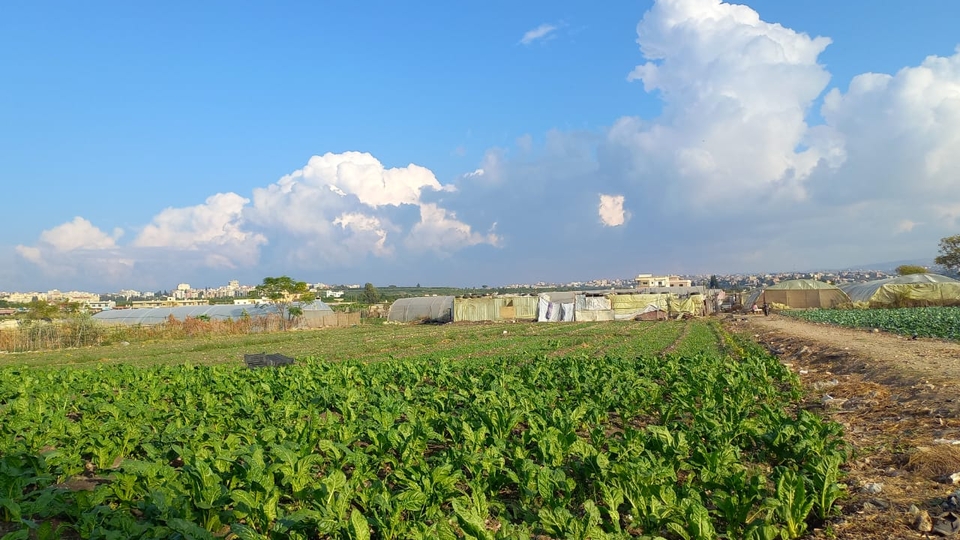
Fertile agricultural fields on amiri state land surround the Palestinian refugee camp of Rashidieh in southern Lebanon. The use of amiri lands is free and not conditional on Lebanese nationality, making it accessible to Palestinian and Syrian refugees. Rashidieh, Lebanon. 2021. (Photo courtesy of Public Works Studio)
The Different Names of the Commons
In 8 percent of properties listed in records of the ministry of finance, the name of the proprietor denotes that the land is held commonly by the public.
2,773 properties are listed under the name masha‘ (communal), 408 are designated as mar‘a (pasture), and 125 as baydar (threshing floor). In 1,253 cases, the proprietor is “the general population/residents/property holders” of a named locale. These lands are distributed unevenly across Lebanon.
The mere existence of these various concepts is in itself evidence of a long-standing, organic relationship between people and land, one grounded in collective, public use rather than individual ownership.
Their respective meanings also capture the diverse practices and uses of land in Lebanon, beyond our dominant modern framework that tends to associate the public domain only with gardens or parks. Masha‘ refers to land shared by the general public, equally, without exception, with no individual owner. Baydar is a flat land used for threshing wheat and barley; i.e. separating the grain from the chaff after the harvest. Mar‘a is a pasture; a wild, uncultivated land with vegetation suitable for grazing on which herds of livestock can subsist. These three categories all refer to the general public at large.
But the fourth naming, “general population/residents/property holders of X town,” refers to a specific public. In some instances, the lands are for the use only of all persons whose civil status (nufus) is tied to that town; in others, for all registered residents of the town even though their civil status be tied to a different locale and even if they are not Lebanese nationals. And in some cases use of the land is limited to all holders of property in the town, even if they are neither residents nor civil status holders.
Some attribute this fourth designation to the mid-19th century social revolution in which peasants took control of the lands they were working under feudal lords. When the Ottoman Empire began to enumerate lands with the intention of imposing taxes on the population, these peasants claimed the areas belonged to the “general population” in order to evade taxation.
Across their different names, these lands refer to spaces that have always been reserved for public benefit, with equal access to the land and its resources, and far from conceptualizations of private property as paramount. Today we must protect them as living practices of the organic relationship between people and the land at the local level and as expressions of the diverse lifestyles, traditions, and socio-cultural practices of the communities
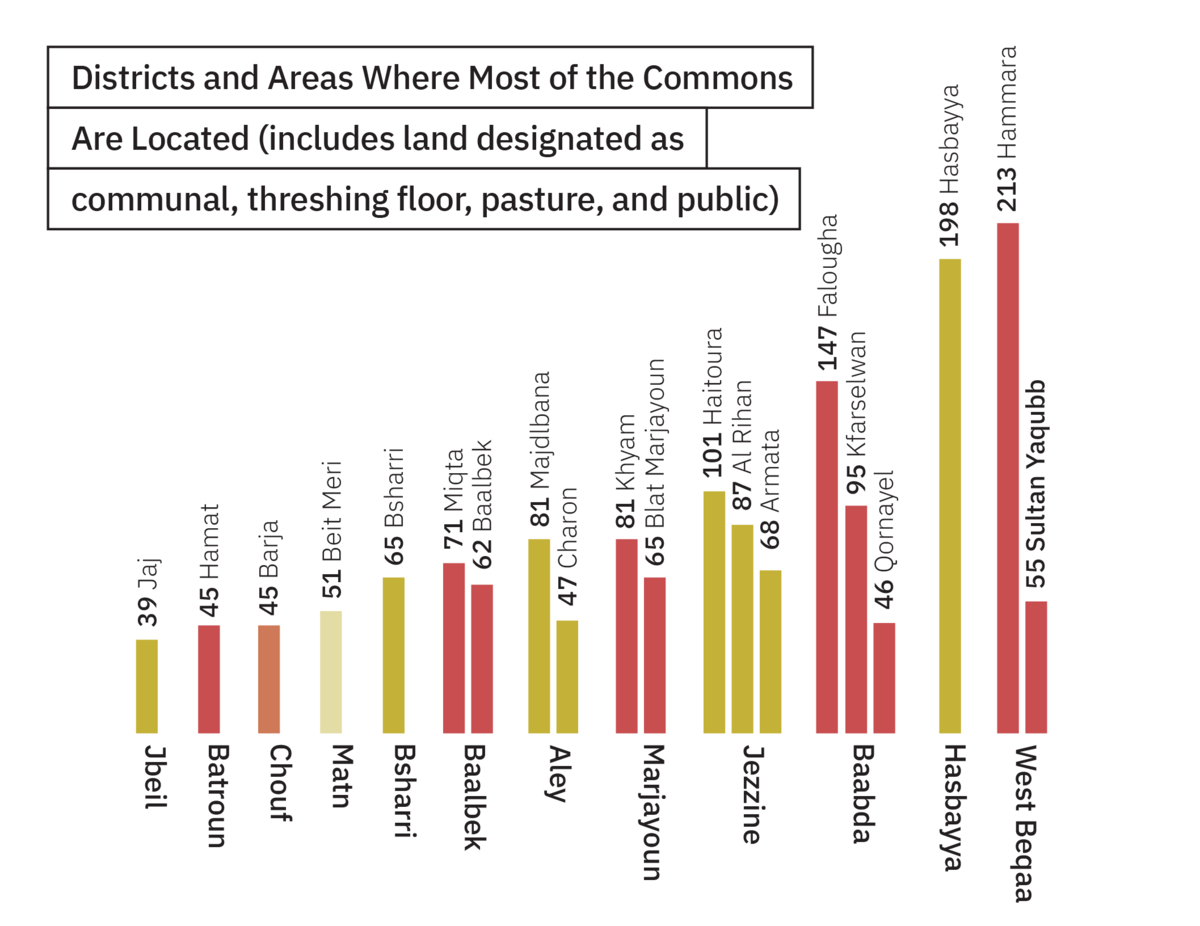
Lebanon’s Long-Lost Housing Projects
Another element worth protecting, or rather resurrecting, is the housing component of state property. The Lebanese state owns thousands of properties designated for housing and registered under the name of several ministries, departments, or directorates concerned with housing, such as the Reconstruction Authority, the Ministry of Housing and Cooperatives, Public Housing, or the Housing Authority. None of these institutions exist today, all having been subsumed into the Public Corporation for Housing (PCH).
The state’s direct intervention in the housing sector can be traced to the mid 1950s with the construction of the first public housing projects. These projects were conceived not in service to populations in social and economic need, but rather as a response to waves of displacement caused by natural disasters.
In 1956, in the aftermath of a devastating earthquake in the Chouf and in the South, the Relief and Reconstruction Department was established. The agency acquired real estate in 67 affected areas, constructed houses and buildings for those affected, and also sold real estate to others to build their own homes (according to Rony Lahoud, current PCH Director). The same process was followed when the Abu Ali River in Tripoli flooded multiple times that same year. The agency was short-lived, abolished only a year later.
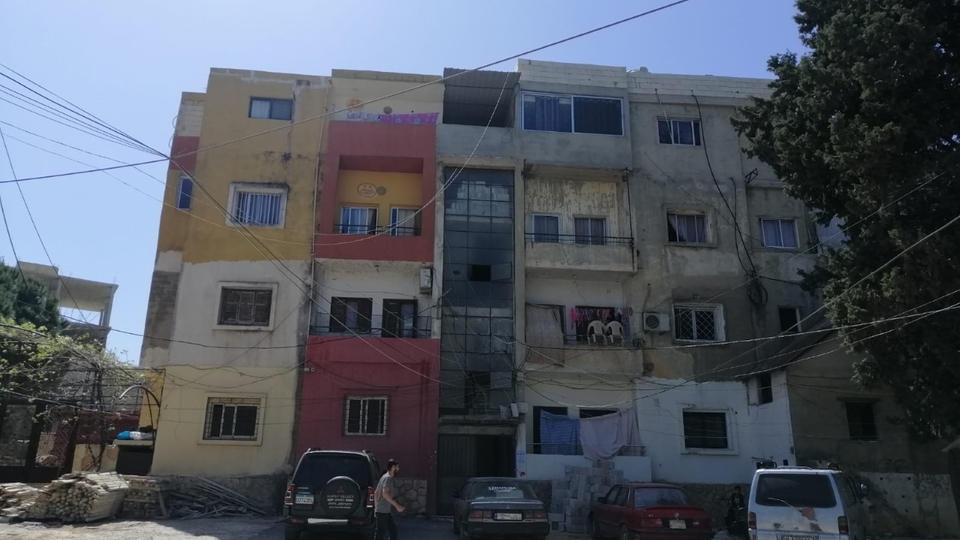
A man walks in front of a public housing building in the area known as al-Mankoubin, which took form in the aftermath of the 1956 Abu Ali River floods. Tripoli, Lebanon. 2021. (Photo courtesy of Public Works Studio).
Proposals for social housing projects soon followed, but most did not see the light. Yet, under pressure from unions, and considering that one of the main obstacles to building affordable housing was the scarcity and high cost of property, Parliament passed legislation in 1965 to allow the government to acquire land and resell it to parties wishing to build. The Ministry of Public Works and Social Affairs was supposed to facilitate the construction of 4,000 housing units, half of which would be reserved for low-income families. Three projects were started: 192 units in Tripoli, 96 in Tyre, and 400 in a suburb of Zgharta. Not all were completed, for different reasons, and the program was eventually dropped.
That was the closest Lebanon has come to building social housing projects. Since the end of the civil war, practically the only work that the PCH has done in this domain is facilitating loans for home ownership.
It is imperative to preserve the state properties designated for housing in official records, for they can be key to a national strategy to solve the current housing crisis and secure affordable housing. Protecting these lands is a concrete, tangible starting point towards inclusive housing programs for low-income households.
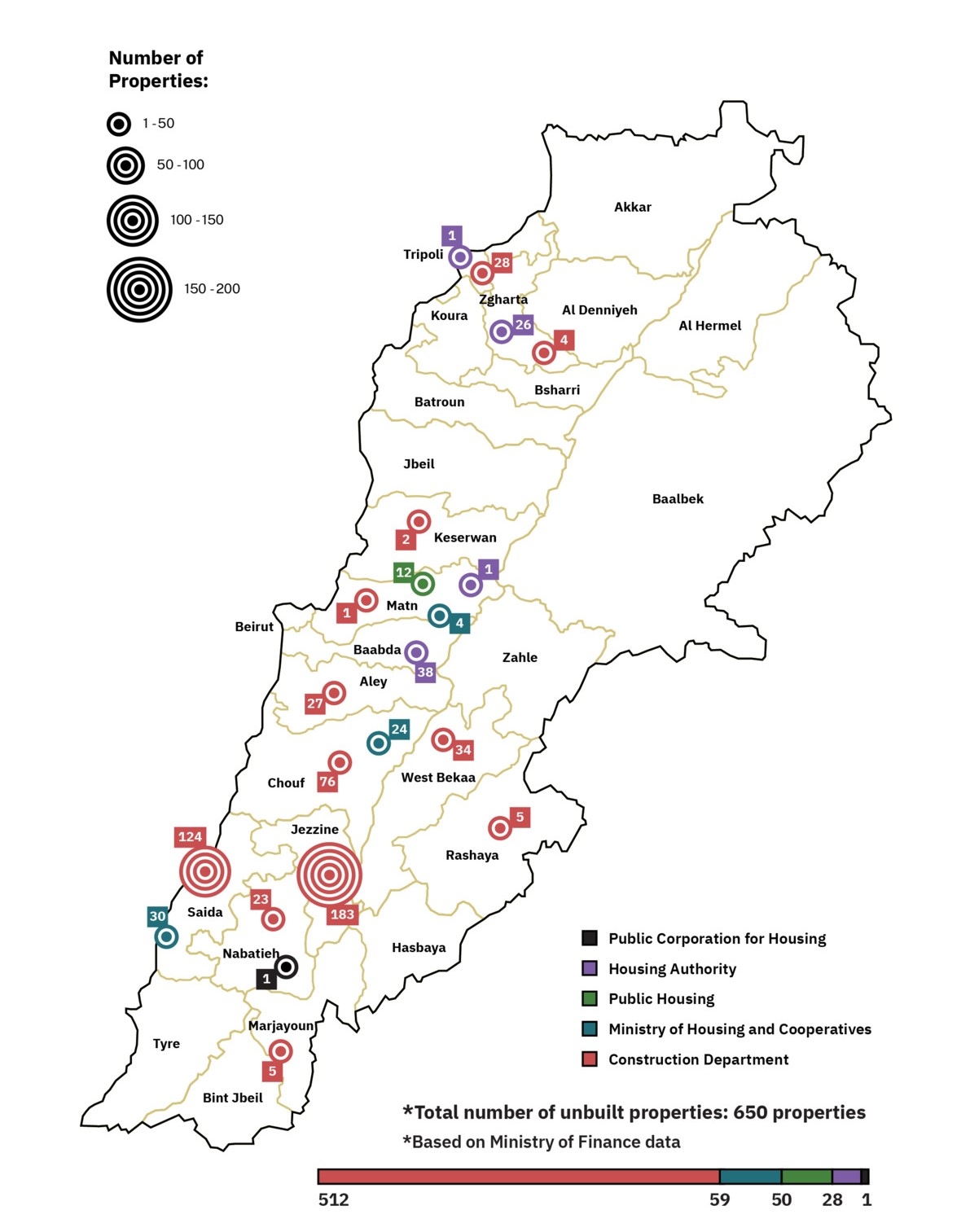
Geographical Distribution of State Property Designated for Public Housing in Lebanon
Banque du Liban: The Forgotten Landlord
Among the registered proprietors of state property is the central bank, Banque du Liban (BDL), which owns a vast portfolio of 1,037 plots of unbuilt state property.
Given that BDL is one of the responsible parties in Lebanon’s economic and financial collapse and the damage done to depositors, we thought it important to investigate its share of state property — as this information should be part of any conversation about how to distribute the losses of the crisis, protect the rights of depositors, and fund the state’s budget.
The majority of BDL’s properties are of the mulk type and 304 are amiri, though the latter make up the largest surface area. BDL owns full shares in some of these properties, and partial shares in others, bringing the total surface area BDL owns in Lebanon to 43 million square meters — not counting the bank’s share in the vast properties owned by Intra Investment Company.
BDL’s properties are distributed unevenly across districts. In terms of numbers, there is a notable concentration in Akkar, where the town of Saidnaya alone houses 250 BDL properties, and in Zgharta where the town of Hilan alone holds 183 properties. Batroun and Chouf are other points of concentration. In terms of surface area, Baalbek hosts the largest percentage of BDL land followed by Tyre.
Of note is the extent to which BDL dominates property ownership in some towns, especially border towns. By way of example, BDL real estate constitutes 51 percent of Tufail (Baalbek). Also, a single BDL property in Ras Baalbek (Hermel) is approximately 1 million square meters.
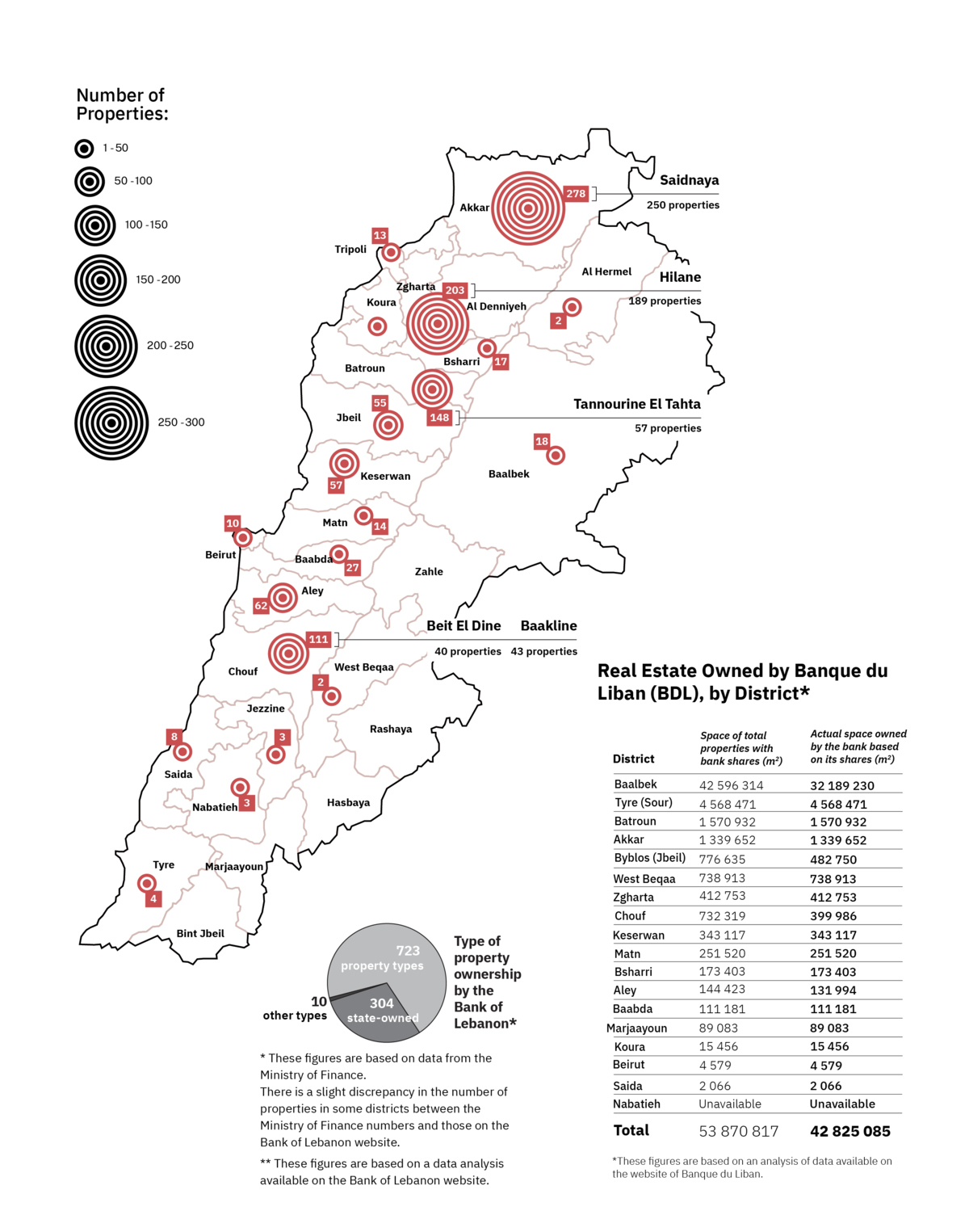
How did BDL come to own so much land? According to the Code of Money and Credit — which is the main law regulating finance and banking in Lebanon and established the central bank — BDL can, with its own funds, buy, build, renovate, sell, or exchange any real estate it deems necessary for its work (Article 110). It can also purchase real estate from individuals, shareholders, institutions, or banks as part of debt settlements, whether consensual or compulsory.
In theory, BDL must sell properties acquired in this manner “as soon as possible” (though no time limit is specified), unless such property is used to conduct BDL work. BDL is supposed to sell these properties gradually by soliciting offers through what is known as a sealed-bid auction, to be conducted once or twice a year. BDL enjoys absolute freedom to accept or reject bids as it deems appropriate (yet for no less than the value of the debt for which it acquired the property in the first place). Given how real estate is valued in Lebanon, it is in BDL’s interest to sell high-value residential properties first before agricultural land.
In reality, however, properties acquired in this manner have long been sitting vacant, unused, or neglected, without any attempts from BDL to solicit any offers or put them up for sale.
What we need now is precisely the opposite of privatization: to reemphasize the value of the public domain and of the state’s role in managing it as a source of livelihoods, production, and housing.
Amid the collapse of the Lebanese state, it is imperative that the state not cede lands that are currently sustaining the livelihoods of many communities through shared access to resources. These lands also hold the key to more sustainable and equitable responses to social needs, from access to housing to a fair distribution of the losses of the current crisis.
Holding a fire sale of state properties now, or allowing private entities to manage them, places private over public interest, robs future generations of their public domain, and further erodes the state capacity needed to pursue social justice. What we need now is precisely the opposite of privatization: to reemphasize the value of the public domain and of the state’s role in managing it as a source of livelihoods, production, and housing.
